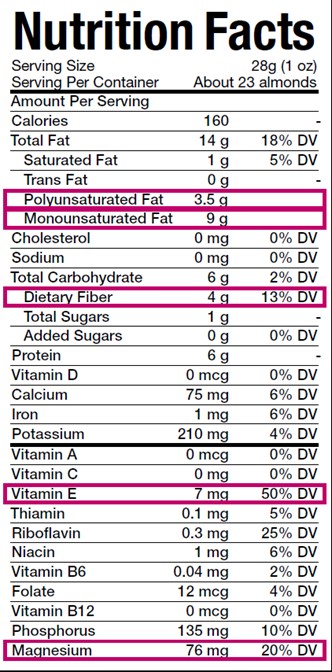You can’t deny that almonds are a great snack. They taste great, whether you like them natural, roasted or flavored. They’re healthy – a one-ounce handful provides half your daily needs for vitamin E, is a significant source of magnesium and riboflavin, and is full of naturally good fats. They’re easy to carry around on the go as a non-perishable, non-messy snack.
And there’s another reason: what a lot of people don’t think about is the lack of waste when you snack on almonds. Every part of the almond tree can be consumed, reused, or recycled.
Before your favorite nut reaches your kitchen, almond farmers do their part to mitigate food waste. There are three parts of an almond, all of which are put to good use: in addition to the kernel we eat, the hulls are sold as livestock feed, which reduces the amount of water used to grow other feed crops, and the shells are used for livestock bedding.

The almond tree itself provides benefits as well. As a tree, it stores carbon dioxide, releases oxygen, and cleans the air of pollutants. A study last year showed almond farming in California already offsets about 50 percent of the carbon dioxide it emits.1 Now research is underway to understand the impact of recycling the whole orchards at the end of their productive lives by chipping the woody tree waste and returning it to the soil, which could improve the soil and help the industry in its commitment to zero waste.
In addition to this, when you actually eat almonds, you’re eating the whole kernel, and there’s no rind, skin, peel, or pit – no waste!
Almonds also have a long shelf life. When stored airtight under 40 degrees F, almonds stay fresh for up to two years. So it’s unlikely you’ll need to throw them out before you eat them.2
Even making homemade almond milk can also be zero waste by making the most of the leftover ground almonds. Try one of these ideas:
- DIY Almond Pulp Body Scrub
- Honey-Cinnamon “Graham” Almond Pulp Crackers
- Rosemary-Parmesan Almond Pulp Crackers
So, if you’re not a fan of food waste, you can be a fan of almonds.
1Kendall, A., Marvinney, E., Brodt, S. and Zhu, W. (2015), Life Cycle–based Assessment of Energy Use and Greenhouse Gas Emissions in Almond Production, Part I: Analytical Framework and Baseline Results. Journal of Industrial Ecology, 19: 1008–1018. doi: 10.1111/jiec.12332
2Almond Board of California. Almond Shelf Life Factors. Technical Summary. Jul. 2014. http://www.almonds.com/sites/default/files/content/attachments/2014aq0007_shelf_life_factors.pdf


